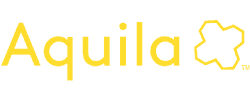Modern workforce trends that impact HR wellness program engagement
Wellness programs are key to improving the mental, physical and sleep health of your employees, which in turn increases productivity and employee satisfaction. But with less than 40% of workers utilizing these types of benefits, the missed opportunities – for them and you, the employer – are staggering.
It’s crucial to understand the changing face of the American workforce to better address wellness needs, recruit participants and sustain effective programming. Let’s look at a few of the modern workforce trends influencing wellness program engagement.
Trend #1: ‘Wellness’ redefined
Today’s workforce looks at wellness in a whole new light. Gone are the days of companies checking that box by way of an annual flu shot clinic or the rudimentary workout facility. “Wellness” in conventional terms extends far beyond physical health into broader, more holistic areas. Its near-universal definition now encompasses more of the whole person to include the mental, emotional, spiritual, social and environmental components of one’s life.
Addressing all these facets of wellness is key to effective programming – and what today’s workforce has come to expect of its employers. So along with a traditional physiological wellness offerings like onsite gyms, health screenings and nutritional services, employers should consider incorporating yoga or meditation classes, long-term financial planning seminars, workshops on resilience and other innovative activities, initiatives and guidance targeting the full breadth of “wellness” as it’s now understood.
Trend #2: Flex work, remote offices
If pandemic life taught us anything, it’s that working from home works. It proved so feasible that 58% of American workers now have the option to work remotely – at least on a part-time basis. And when given the choice to work from home, 87% of employees gladly say “yes” to it. Remote workers tend to be less stressed thanks to a greater work-life balance. They’re also just as, if not more, productive than they were in a traditional office setting.
Along with the growth in remote-work situations, we’re also seeing an uptick in support for flex schedules. Not everyone wants to – or can – clock in a 9 a.m. and out at 5 p.m. Technology and a global economy allow many workers to log in at any time of day or night, and as long as the work gets done, employers are realizing that there’s very little problem with this option. There’s even a movement away from the 40-hour, 5-day workweek, so Fridays in the office could soon be few and far between.
But in a flexible or remote work situation, workers often find themselves more isolated and reluctant to physically connect with their colleagues. This requires HR departments to find the right balance of wellness program offerings. Essentially they need to offer options attractive to those craving more face-to-face time (not to mention time away from a computer screen) but also keep wellness programming accessible to those who prefer to stay home. It’s also wise to consider incentivizing and rewarding those who participate.
The seminar on long-term financial planning and exercise classes, for example, could be offered in-person and via remote log-in. But a well-hyped community service day during the workweek is a great way to get those working from home but longing for connections involved and interfacing with the group as a whole. And excited about a little (paid) time away from their desk!
Trend #3: Gen Z
Americans born between 1995 and 2010 – “Gen Z” – are a growing contingent of the global workforce whose preferences, style and habits cannot be ignored. This tech-savvy generation grew up in the digital world, and the internet and social media have shaped them and the way they consume information (lots), collaborate (very well) and expect things to move at on-demand speed. Videos speak loudly to the Gen Z workforce, due much in part to their reliance on YouTube for all things from education to entertainment. But the generation that’s been connecting to people all over the world for all of their lives also values face-to-face interactions and group learning.
Long story short, Gen Z is hungry for information and self-improvement strategies – and wants most of it in a digital format. Social media is an effective and necessary tool for marketing to this group, and they’re right at home watching online videos and meeting up virtually via Skype and Zoom. Throw lots of opportunities for learning and personal growth at this eager, education-craving population, and expect them to jump on the bandwagon in force.
Well(ness), now what?
You can’t increase employee engagement in wellness programs if you don’t understand your target audience. Today’s workforce views “wellness” much more holistically; is going to need some serious enticing to come out of their comfort zones; and needs a mix of both in-person and virtual activities and programs at their disposal. Of course, company culture and employees’ individual needs have to be factored into the equation as well, but it’s wise to always consider the modern workforce trends shaping the attitudes and preferences of those you’re trying to reach and help.
Whether your organization has an established wellness program, seeks to revamp its offerings or intends to build one from scratch, Aquila has more than 25 years of experience managing fitness centers and implementing strategies to increase member engagement in wellness activities.
Contact us to get started on a wellness plan tailored to your company’s specific needs.
